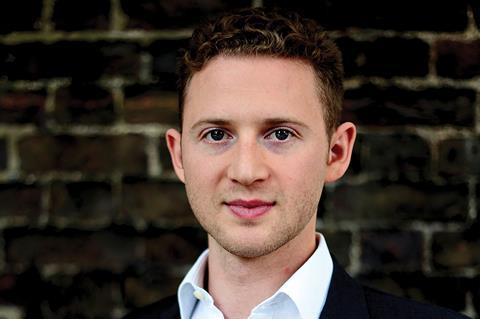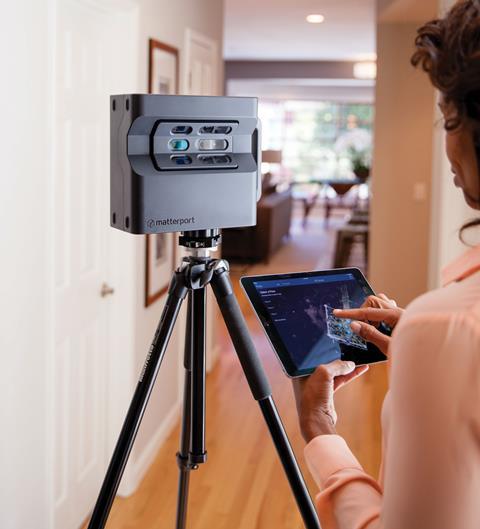Matterport EMEA MD James Morris-Manuel sat down with Property Week following the news of its merger with publicly listed Gores Holdings to discuss its future plans for digital real estate.

How will the Matterport technology evolve following the merger?
In the coming months, you will see our continued investment in artificial intelligence and machine learning. We’re in a unique position. The way our technology works is that we’ve built an AI engine called Cortex. Cortex essentially gives us the ability to take a 2D image and make it 3D and that is completely unique to Matterport.
Simply put, if you use your phone or a 360 camera, the artificial intelligence engine can take that content, it goes through Cortex, and it gives you back a 3D model. If we’re talking about commercial property – let’s take a meeting room within an office space – it’s seen hundreds upon hundreds of meeting rooms from different directions with high-fidelity imagery as well as 3D data behind that imagery. And because the engine has seen so many, when you upload a 2D image from your phone of a meeting room, our AI can go, “Oh, I know the dimensions of this room, because I’ve seen lots of rooms like this”. It also can start to do things like recognise this is a meeting room.
What have you been up to recently?
Schools were using us as they were preparing to reopen to really articulate to their parents what back-to-school looks like. How are they going to make sure that classrooms are safe? Are they going to have sanitisation stations? What’s the entry and exit points? They were using the tech for showing how configurations will be within the school to keep it Covid-safe. We are definitely seeing the product being used for lots of different purposes as buildings are being reshuffled or redesigned.
The industry is seeing a lot of vacant real estate be repurposed into other asset classes. How will your technology play a role in that?
What’s lovely about the Matterport technology is it can be used through the whole building lifecycle – and permitted development is a great example of a building lifecycle evolving. The digital twin can be captured at the architectural stage in order to see how it’s going to be repurposed.
How will the drive for sustainability in real estate help your platform?
There are some inefficiencies with the carbon footprint that comes with viewing properties. For example, if someone goes to view a property, the agent drives there, the seller drives there, the purchaser drives there, and all of a sudden you’ve got four people driving to and back. Then you may want to do a second viewing – that’s 16 journeys in a car. Our technology allows people to do a lot more remotely and it will cut down on travel significantly, which will help a lot of businesses work towards their zero emissions strategies.
With everything that’s happened in the world recently, it’s made companies look inwards. It’s made them look at their operational processes and how can they be made more efficient. How can they go online more effectively? How can they save time, money, human resources?

What are the key opportunities stemming from this merger?
The property industry is one of the largest asset classes in the world. It’s valued at about $230trn but the industry is completely analogue. Our goal would be to take this whole industry from being analogue to being digital.
Some of the key future focus areas are going to be around delivering new products for our customers. Matterport is not just a 3D tour company. We’re creating digital twins of every property in the world. We’ve got 250,000 subscribers in more than 150 countries so there’s some good and big opportunities there.
One of the other key growth areas is geographic expansion. We’ve got a US office and head office in California, EMEA head offices in London and APAC head offices in Singapore. Obviously these are three of the world’s key tech hubs and our focus is expanding across those markets. We’re investing heavily in operations from France, to the Philippines, across the US, and also to support our value-added resellers. At the moment, our value-added resellers in EMEA are in 15 countries, but there are 116 countries in EMEA, so growing that network to really grow our geographic footprint is a top priority.
Growing different verticals is another key part of our growth. Around 50% of our customer base comes from residential real estate. The other 50% is made up from other verticals: commercial real estate, travel and hospitality, architecture, engineering, construction insurance, facilities management, retail. We believe there are 4 billion buildings in the world, but that might not just be one space. It might have ground floor retail, offices on the middle floors and residential on the top floors. So when we look at how big the market is, it’s not just 4 billion buildings, it’s 20 billion spaces that could be captured. We we’ve got 4.4 million properties on the Matterport platform today. And the opportunity is 20 billion spaces, so we are really at the beginning of this journey.






























No comments yet